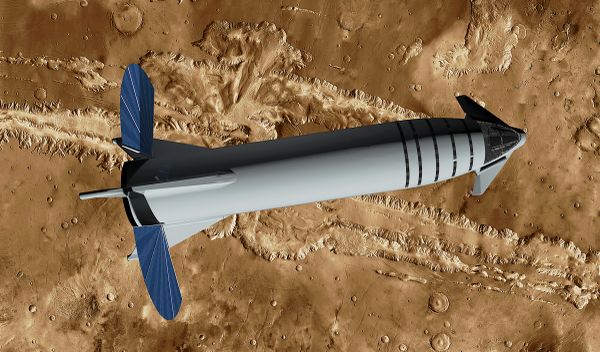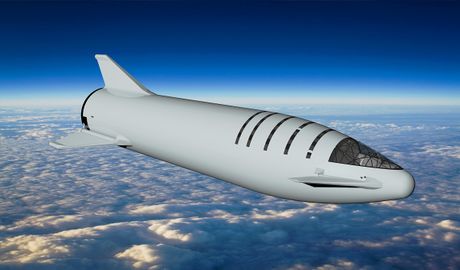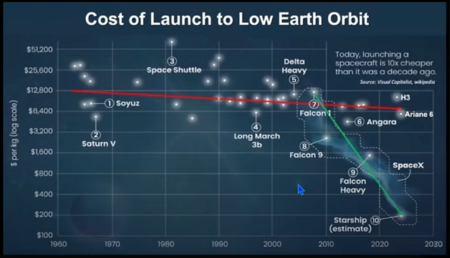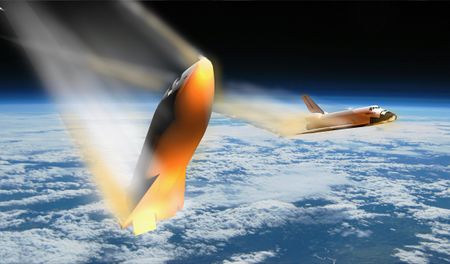Difference between revisions of "Cost of transportation"
m (→Cost to LEO) |
m (→Cost to LEO: fixed grammar.) |
||
| (3 intermediate revisions by the same user not shown) | |||
| Line 95: | Line 95: | ||
|- | |- | ||
|} | |} | ||
| − | |||
Comparison of various launch systems based on the above: | Comparison of various launch systems based on the above: | ||
| Line 198: | Line 197: | ||
| colspan="10" |To achieve these figures Starship and Skylon need to transport about 100 000 tonnes. The firing rates requires for the space canon are very high and might not be achievable. These are base costs, without financing, subsidies, insurance or profit. | | colspan="10" |To achieve these figures Starship and Skylon need to transport about 100 000 tonnes. The firing rates requires for the space canon are very high and might not be achievable. These are base costs, without financing, subsidies, insurance or profit. | ||
|} | |} | ||
| + | [[File: Cost_To_LEO.png|thumbnail|450x450px|top|px| The cost of space flight has decreased in last 60 years]] | ||
| + | |||
In the table above, the recoverable Falcon heavy is entirely speculative, and with the successes of Starship test flights is unlikely to ever be built. | In the table above, the recoverable Falcon heavy is entirely speculative, and with the successes of Starship test flights is unlikely to ever be built. | ||
| − | Based on | + | Based on the analysis above, the cost to orbit in the nearby future might be as low as 40$ per kg. |
| − | |||
| − | |||
Note the steep decline of costs by SpaceX is caused by reusing their rockets. SpaceX hopes to reduce the cost of lifting 1 kg to orbit to about $200. This is likely the cheapest that can be achieved using normal rockets. | Note the steep decline of costs by SpaceX is caused by reusing their rockets. SpaceX hopes to reduce the cost of lifting 1 kg to orbit to about $200. This is likely the cheapest that can be achieved using normal rockets. | ||
| Line 209: | Line 208: | ||
==Cost from LEO to Mars== | ==Cost from LEO to Mars== | ||
| + | [[File:Solar OTV 12 containers angled solar panels.jpg|thumb|450x450px|Solar powered Orbital Transfer Vehicle]] | ||
| + | |||
The same analysis that was used to show the gains of re-usability can be used for orbital transfer to Mars. Following the radical reduction in cost possible with high volume reusable launchers, the cost of moving cargo to Mars goes down significantly. The solar electric or nuclear electric thrusters are clearly the most economical solution for the volumes needed for the development of a martian settlement, as long as the volumes are there. On the other hand, cheap orbital refueling can profit from the Obert effect for low ISP high trust chemical propulsion. | The same analysis that was used to show the gains of re-usability can be used for orbital transfer to Mars. Following the radical reduction in cost possible with high volume reusable launchers, the cost of moving cargo to Mars goes down significantly. The solar electric or nuclear electric thrusters are clearly the most economical solution for the volumes needed for the development of a martian settlement, as long as the volumes are there. On the other hand, cheap orbital refueling can profit from the Obert effect for low ISP high trust chemical propulsion. | ||
Latest revision as of 15:36, 26 October 2024
The cost estimates for transportation to Mars cover a large span. From extremely expensive (200 000$/kg) for one way scientific missions, to a more recent estimate of 130$/kg for the SpaceX Mars plans, and even less for future transportation systems(link).
The main cost parameter for launch systems cost is the number of flights per vehicle. Up till recently that number was one, but re-usability seems to be achievable soon, and should be expected for any large scale plan for Mars colonization. The cost of the energy required to prepare the return propellant is also important, with the development of in-situ fuel production is the key to low costs of transportation to Mars.
Contents
Propellant production costs
As far as propellant for launch vehicles on Earth is concerned, oxygen, hydrogen, kerosene and methane are all commercially available processes and are considered commodity goods for establishing the cost of transportation to Mars. The costs that were considered are in the following table:
| Propellant | Density (kg/m3) | Cost
($/kg) |
References |
| Oxygen | 1140 | 0,16 | NASA paid 67 cents per gallon for the shuttle, so about $0.16 per kg |
| Hydrogen | 70 | 3 | Hydrogen Production Cost Using Low-Cost Natural Gas, DOE projection, 2012 |
| Kerosene | 800 | 0,4 | Commodity price for jet fuel, july 2016 |
| Methane | 420 | 0,2 | 0,1$/kg natural gas + delivery, refining and liquefaction |
Cost to LEO
The main cost of transportation is for the phase from Earth surface to LEO. The overall deltaV to orbit is about 9 000 m/s, more than for any other part of the trip. For re-usability, the vehicle must be able to return to Earth surface with the minimum amount of damage,
This analysis is done for unmanned vehicles. Use of unmanned vehicles greatly reduces the development costs and gives freedom of experimenting risky maneuvers without dramatic consequences.
The minimum value from the surface to LEO is the energy difference between the two positions: orbital velocity and elevation. With an electrical cost of 0.1$ per kWh, the difference in energy is about 33 MJ/kg, which corresponds to about 1 $ per kg. If energy costs can be reduced, the cost to orbit might be even lower.
Cost may eventually be reduced to nearly the base cost of energy when (and if) geostationary space elevators are finally developed and financed over long periods. Significant access to space based power systems might eventually reduce the cost for moving mass to orbit to a trivial amount.
| Launch cost economics is a complex subject, source of endless debates. We present a simplified analysis here, for transportation to LEO, using the following equation: | ||
| Pc | Payload cost ($/kg) | Pc= (De+Co*Vg+In+Vg*Vf*(Ma+Fu))/Pm*Vg*Vf |
| De | Development | Research, management and testing. Safety requirements for crewed vehicles. Flight proofing. |
| Ma | Materials and manufacturing | person hours, testing. |
| Co | Construction of the vehicle | Materials and manufacturing, person hours, testing. |
| In | Infrastructure | Manufacturing plants, tooling and launch sites for a series of vehicles |
| Ma | Maintenance cost per flight | Clean up, repair, upgrades, fueling, set up on pad. |
| Fu | Fuel cost per flight | |
| Vg | Vehicles per generation | Number of vehicles built per design generation. |
| Vf | Vehicle flights | Number of flights a vehicle can do over its lifetime |
| Pm | Payload mass (kg) | Payload mass per flight |
| Environmental impact is not included as a cost but needs to be taken into account in the overall analysis. This parameter doomed fission pulsed propulsion and exotic fuels using fluorine, and might become an issue at high flight rates.
The table below gives the results for the above equation. It is based on the transportation of 100 000 tonnes to LEO. | ||
Comparison of various launch systems based on the above:
| Vehicle | Development (De) | Construc-
tion (Co) |
Infra-
structure (In) |
Flights (Vf) | Fuel cost
per flight (Fu) |
Mainten-
ance/flight (Ma) |
Vehicles per generation (Vg) | Payload (Pm) | Payload cost (Pc) |
| Billions | millions | billions | millions | millions | kg | $/kg | |||
| Delta IV | 0,5 | 300 | 0,2 B$ | 1 | 0,5 | 2 | 20 | 22 000 | 15 000 |
| Falcon Heavy | 0,3 | 70 | 0,2 B$ | 5 | 0,5 | 0,5 | 20 | 54 000 | 1 700 |
| Falcon Heavy recoverable | 0,7 | 90 | 0,2 B$ | 5 | 0,5 | 0,5 | 20 | 30 000 | 520 |
| SpaceX Starship | 10 | 600 | 2 B$ | 100 | 1,25 | .5 | 20 | 300 000 | 40 |
| REL Skylon | 12 | 250 | 0,5 B$ | 200 | 0,1 | 0,1 | 200 | 15 000 | 48 |
| Space gun | 0,5 | - | 2 B$ | 20 000 | 0,05 | 0,01 | 20 000 | 1000 | 925 |
| To achieve these figures Starship and Skylon need to transport about 100 000 tonnes. The firing rates requires for the space canon are very high and might not be achievable. These are base costs, without financing, subsidies, insurance or profit. | |||||||||
In the table above, the recoverable Falcon heavy is entirely speculative, and with the successes of Starship test flights is unlikely to ever be built.
Based on the analysis above, the cost to orbit in the nearby future might be as low as 40$ per kg.
Note the steep decline of costs by SpaceX is caused by reusing their rockets. SpaceX hopes to reduce the cost of lifting 1 kg to orbit to about $200. This is likely the cheapest that can be achieved using normal rockets.
However, this price could be lowered further if expensive infrastructure is built, such as Sky ramps.
Cost from LEO to Mars
The same analysis that was used to show the gains of re-usability can be used for orbital transfer to Mars. Following the radical reduction in cost possible with high volume reusable launchers, the cost of moving cargo to Mars goes down significantly. The solar electric or nuclear electric thrusters are clearly the most economical solution for the volumes needed for the development of a martian settlement, as long as the volumes are there. On the other hand, cheap orbital refueling can profit from the Obert effect for low ISP high trust chemical propulsion.
The main parameter for costs from LEO to Mars are deltaV and the use of atmospheric braking. Vehicles such as solar powered Orbital transfer vehicles (OTV)'s are unable to use either the Oberth effect or atmospheric braking. However, the mass of fuel required is so low that these loses are offset by the reduced overall mass. Interesting gains might exist with propellant produced on Mars, or in Mars orbit.
| Vehicle | Development | Construction | Infrastructure | Flights per vehicle | Fuel cost per flight | Flights required | Payload per flight | Vehicles required | Total Flight costs | Payload cost
($/kg) |
| Billions$ | millions$ | billions$ | millions$ | billions$ | ||||||
| Chemical one way | 1.0 | 10.0 | 0.0 | 1.0 | 0 | 16 667 | 6 | 16 667 | 2 666 | 26 657 |
| Starship with refueling | 0.0 | 0.0 | 0.0 | 100.0 | 0 | 556 | 180 | 6 | 39 | 389 |
| Beamed power Skylon() | 0.0 | 0.0 | 1.0 | 200.0 | 0.0 | 6,667 | 15 | 33 | 57 | 567 |
| Solar electric() | 2.0 | 300.0 | 0.2 | 100.0 | 0 | 556 | 180 | 6 | 15 | 151 |
| Nuclear thermal | 4.0 | 300.0 | 0.0 | 20.0 | 0 | 556 | 180 | 28 | 24 | 243 |
| Costs for 100 000 tonnes to high orbit. 2016$.
The chemical one way is paired with the Delta IV vehicle. For the purpose of this table solar electric is the same as nuclear electric. The payload cost includes the cost of the Launcher flights required to carry up the propellant. | ||||||||||
As for the launch vehicles, the OTVs are unmanned. This reduces cost and complexity tremendously, since there is no need to transport a crew and their living environment. Docking, fuel and cargo transfer operations may be supervised and teleoperated, and the OTVs are provided with robot arms moving on rails, or similar active elements, that can be used for inspection and repair.
- Low thrust vehicles follow very different trajectories than high thrust vehicles. They cannot profit from the Oberth effect, and therefore require higher deltaV for the same mission. Despite this, their reduced fuel use makes them more economical than high thrust vehicles. At least for most situations that concern the long term occupation of Mars.
- The lowest expected cost would be in the range of 130 $ per kg. The SpaceX Starship system might be possible at 3-400 $ per kg.
| Δveff= Δv·√(2VE/Δv) where
Δv= ve·ln(mo/mf) | ||
| Δveff | Effective Velocity change (m/s) | |
| VE | Escape velocity (m/s) | Escape velocity of the body around which the vehicle is doing the Oberth maneuver |
| mo | Initial mass (kg) | Propellant, payload and vehicle structure |
| mf | Final mass (kg) | Payload and vehicle structure+remaining propellant |
Cost of Mars landing
Landing on Mars can be done using aerodynamic braking. This reduces fuel requirement but constrains the arrangement of the vehicle. for recoverable vehicles, without parachutes or disposable thermal shields the cost would be minimum, limiting itself to maintenance.
Cost to Low Mars Orbit (LMO)
Propellant production on Mars is mostly a factor of the cost of electrolysis of water. The embodied energy of Methane on Mars is about 127 MJ/kg. For an energy cost of 150$ per GJ, the cost per kg of Methane would be about 19 $ per kg. The price for oxygen is included in the cost of methane and hydrogen, as it is a byproduct of the electrolysis process required to produce methane. The DeltaV to Mars orbit is about 4100 m/s.
| Propellant | Density (kg/m3) | Cost
($/kg) |
References |
| Oxygen | 1140 | - | Included in hydrogen and methane costs. Oxygen is a byproduct of hydrogen separation |
| Hydrogen | 70 | 28 | Hydrogen from Electrolysis |
| Methane | 420 | 19 | Methane from Sabatier reaction of CO2 and hydrogen |
Cost From LMO to Earth
Cost of return propellant can be reduced if aerodynamic braking is possible.
Cost of Earth landing
Landing on Earth is similar to landing on Mars and therefore has the same parameters. Aerodynamic re-entry is inevitable, except for future technologies such as space elevators or similar installations.











